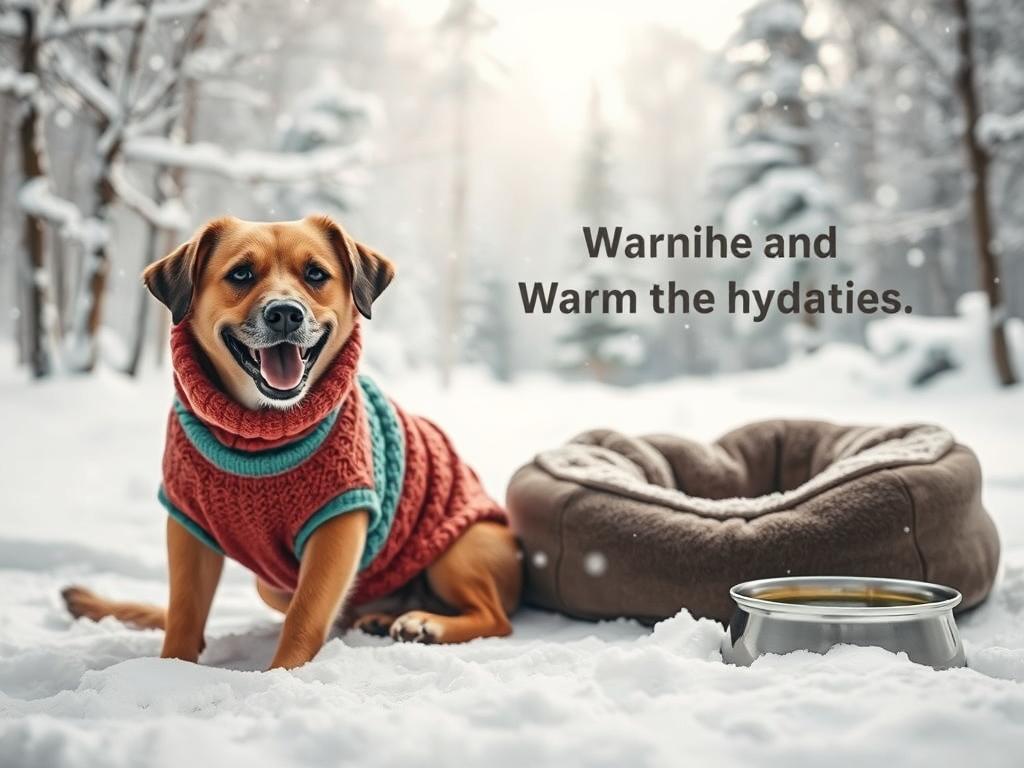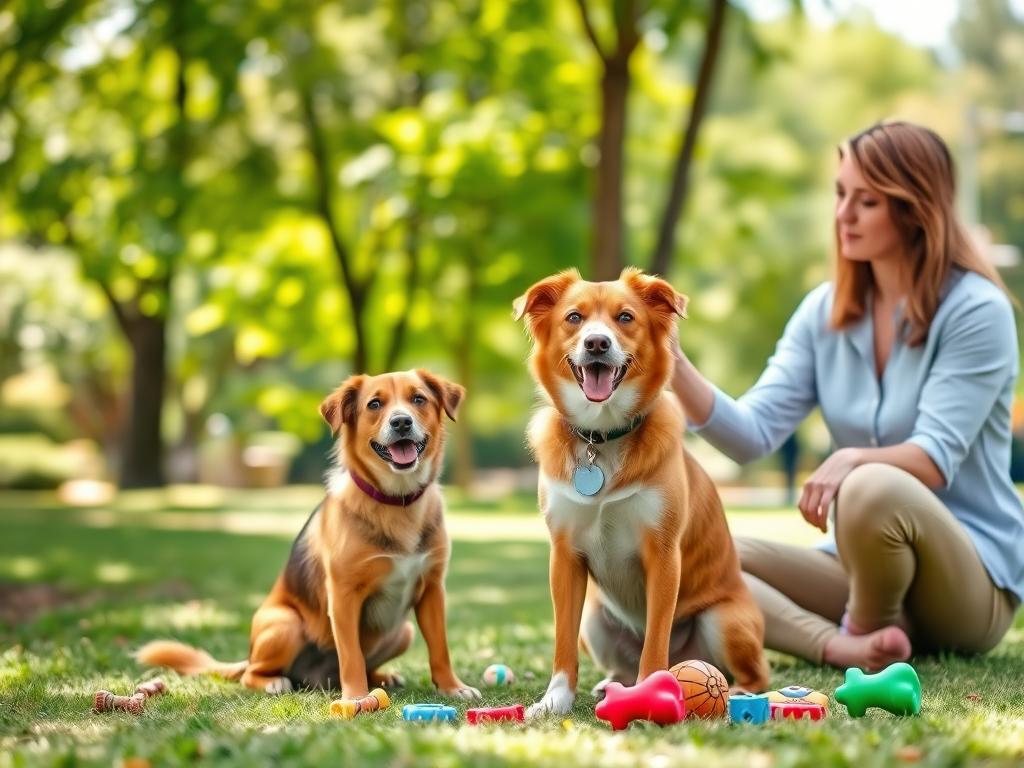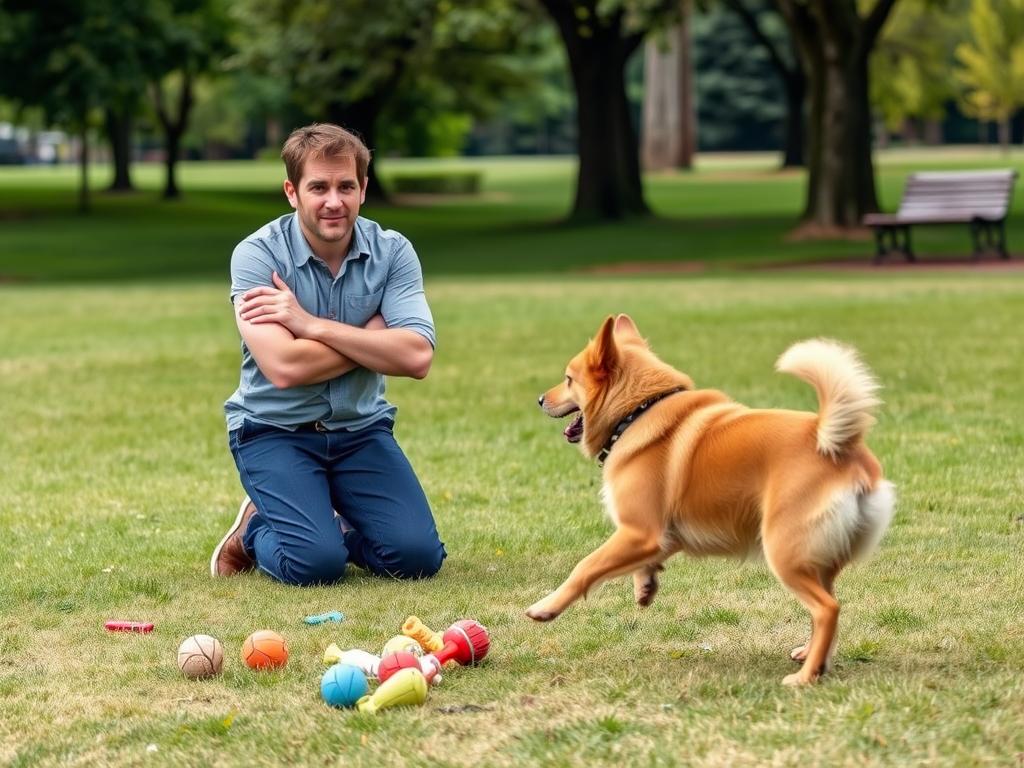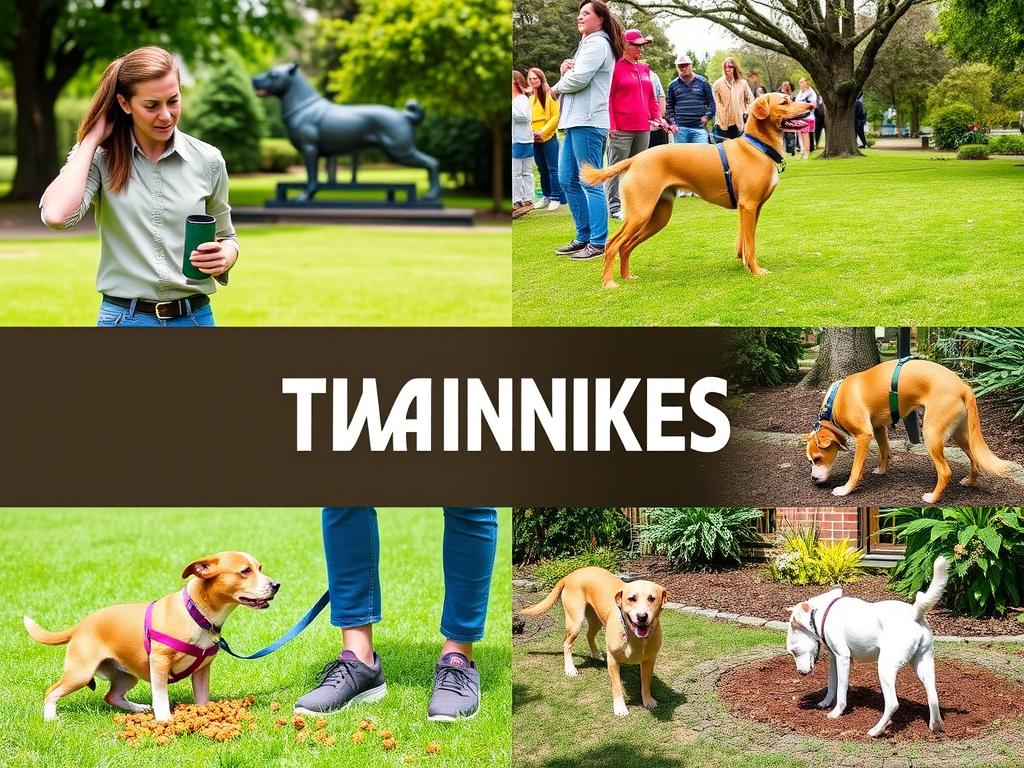Did you know that more dogs are lost during the winter months than in any other season? This alarming statistic highlights the significant challenges dogs face during cold weather. As temperatures drop, pet owners must prioritize winter dog care, ensuring their furry friends are safe and comfortable amidst the elements. Understanding your dog’s individual needs is crucial for maintaining cold weather dog safety. Factors like breed, age, and coat type play a vital role in how well your dog copes with winter conditions.
Caring for dogs in winter goes beyond just providing shelter. It’s essential to create a warm environment, choose suitable gear, and maintain a proper diet to help your pet thrive during the chilly months. By being proactive and observing your dog’s behavior, you can significantly reduce the risk of hazards such as hypothermia and frostbite. In addition, recognizing the signs of stress and discomfort can guide you in adjusting your care regimen and ensuring that your four-legged companion stays safe throughout the winter.
For insights on grooming techniques that can ensure your dog’s coat remains healthy, check out this helpful guide on grooming dogs at home without clippers.
Key Takeaways
- Be aware of your dog’s breed and coat type when determining winter care strategies.
- Provide appropriate winter gear such as coats and booties to protect against harsh conditions.
- Monitor your dog’s behavior for signs of cold stress or discomfort.
- Adjust your dog’s diet to ensure they receive enough calories for warmth in winter.
- Create a cozy indoor environment to help your dog stay comfortable during the winter.
Understanding Your Dog’s Needs in Winter
Winter can pose unique challenges for our furry friends. Understanding your dog’s needs in cold weather is essential for keeping them safe and comfortable. Being well-informed allows you to effectively implement cold weather dog tips and ensure you’re properly winterizing your dog.
Know Your Dog’s Breed and Coat Type
Each dog breed has distinct tolerances to cold temperatures based on their breed characteristics and coat type. Breeds with thick, double coats like Siberian Huskies are more resilient to the cold. In contrast, short-haired or smaller breeds often struggle and can become uncomfortable more quickly. Being aware of these differences helps in understanding dog breed in winter and adjusting care routines accordingly.
- Thick-coated breeds (e.g., Alaskan Malamute, Bernese Mountain Dog) thrive in cold weather.
- Short-haired or small breeds (e.g., Chihuahuas, Greyhounds) need extra protection.
- Monitor for symptoms of cold stress, including shivering and lethargy.
Monitor for Cold Weather Symptoms
Keeping an eye on your dog for any signs of cold stress is crucial. Symptoms can range from mild discomfort to more severe conditions like frostbite or hypothermia. Always check for:
- Shivering
- Lethargy
- Weakness
- Discolored spots on paw pads
For older dogs and puppies, particular care needs to be taken, as they are more susceptible to cold-related issues. It is advisable to keep walks shorter—ideally, under 30 minutes—in temperatures below 32 degrees Fahrenheit. Always choose sunnier times of the day to walk your dog.

Enjoying indoors can also provide alternatives to outdoor walks. Play games or create an obstacle course to keep your dog active and entertained during the winter months. A well-prepared winter safety kit can further help prevent incidents related to cold weather.
| Cold Weather Symptoms | Recommended Actions |
|---|---|
| Shivering | Wrap in blankets and bring indoors. |
| Lethargy | Limit outdoor activities; consult a vet if persistent. |
| Weakness | Keep warm; seek veterinary evaluation if severe. |
| Frostbite Signs | Check paw pads; contact a vet for visible frostbite. |
Essential Dog Gear for Winter
Equipping your furry friend with the right winter dog essentials plays a vital role in keeping dogs warm in winter. The market offers various options tailored for different needs, with dog apparel for cold weather that not only provides warmth but also enhances comfort during outdoor activities.
Dog Coats and Sweaters
When selecting dog coats and sweaters, prioritize materials that retain heat while allowing freedom of movement. Brands like the Hurtta Extreme Warmer Insulated Dog Parka feature waterproof and thermal-insulated materials, keeping your dog warm even in harsh conditions. The design includes 3M reflectors, increasing visibility while out on walks. Cozy sweaters are essential for breeds sensitive to lower temperatures; many dog owners recommend styles such as the Frisco Bobble-Knit Dog & Cat Turtleneck Sweater for quality construction and comfort.
Booties for Paw Protection
Paw protection is crucial during winter, as chemicals used for de-icing roads can harm your dog’s paws. Consider booties made from waterproof materials like the Muttluks Deluxe Winter Dog Boots, which keep paws dry while walking through snow. Additionally, paw wax options, such as Musher’s Secret Paw Protection Natural Dog Wax, are effective in preventing dryness and cracking, ensuring your dog remains comfortable. For visibility, products like the Nite Ize NiteHowl LED Safety Necklace can last up to 60 hours, providing an extra layer of safety during dark winter evenings.
| Gear Type | Recommended Product | Key Features |
|---|---|---|
| Dog Coat | Hurtta Extreme Warmer Insulated Dog Parka | Waterproof, thermal insulation, 3M reflectors |
| Dog Sweater | Frisco Bobble-Knit Dog & Cat Turtleneck Sweater | Quality construction, soft material |
| Dog Booties | Muttluks Deluxe Winter Dog Boots | Waterproof, durable, comfortable fit |
| Paw Protection | Musher’s Secret Paw Protection Natural Dog Wax | Effective against dryness and cracking |
| Visibility | Nite Ize NiteHowl LED Safety Necklace | Lasts up to 60 hours, enhances safety |

Taking the time to choose the appropriate winter dog essentials will ensure that your canine companion stays comfortable and safe while exploring the outdoors this winter season. For additional insights into maintaining a healthy coat, explore the importance of nutrition by checking out this informative guide.
Safe Outdoor Activities in Cold Weather
Cold weather dog activities can be enjoyable and safe with a few adjustments. Shorter walks allow dogs to enjoy fresh air while minimizing their exposure to extreme temperatures. Prioritizing quality over quantity during safe dog walks in winter ensures your dog’s well-being.
Shorter Walks: Quality Over Quantity
When planning outdoor winter dog activities, keeping walks brief but engaging makes for a positive experience. Try to incorporate elements that stimulate your dog’s senses, such as:
- Exploring different trails
- Adding games like fetch or tug-of-war
- Taking breaks in sheltered spots
Monitoring for signs of distress is essential. Watch for shivering, lethargy, or other behaviors that may indicate your dog is getting too cold.
Playtime Ideas for Indoor and Outdoor
Indoor playtime is perfect for when the weather turns harsh. Engaging your dog with interactive toys or playing hide-and-seek stimulates their mind and keeps them active. For outdoor fun, consider:
- Setting up an obstacle course
- Playing with snowballs (just be cautious of the salt on roads)
- Having a buddy playdate in a safe, enclosed area
Regardless of the choice between indoor or outdoor winter dog activities, always prioritize your furry friend’s comfort and safety throughout the winter months.

Proper Nutrition for Winter Care
As the winter months approach, it becomes crucial to adjust your dog’s diet to meet their changing needs. Cold weather impacts energy levels, and dogs may require more caloric intake to maintain warmth and energy. This is particularly true for small dogs and active breeds, as they burn energy more quickly. Consulting a veterinarian can help you identify the right balance of protein, healthy fats, and carbohydrates for your dog’s winter diet.
Adjusting Diet to Combat Cold Weather
Winter dog nutrition should focus on increasing protein and healthy fats to support higher energy requirements. Foods like turkey, fish, and root vegetables such as carrots and sweet potatoes are excellent choices. Highly active dogs, as well as puppies and senior dogs, need careful dietary planning to ensure they receive adequate nutrition. In contrast, less active dogs may require adjustments to avoid excessive weight gain due to overfeeding.
Keeping Hydration in Mind
Maintaining dog hydration in cold weather is essential, as dogs can still become dehydrated despite lower temperatures. Provide fresh water daily and encourage drinking. Offering warm water or broths can promote hydration while adding warmth to their diet. When feeding dogs in winter, balancing hydration with proper nutrition ensures overall health during these chillier months.
Creating a Cozy Indoor Environment
Providing a cozy dog environment indoors becomes essential when winter temperatures drop. A warm and comfortable space not only enhances your dog’s well-being but also supports their health throughout the colder months.
Warm Sleeping Areas and Bedding
Create a designated area where your dog can rest comfortably. Select a soft, cushioned dog bed located in a draft-free zone. Heated dog beds can be beneficial, especially for breeds prone to chill. Consider adding extra blankets or soft bedding materials to help keep dogs warm inside. During extremely cold spells, maintaining your home temperature in the mid-60s ensures a welcoming environment for your pet.
Avoiding Dangerous Heating Sources
While keeping your home warm, be cautious about using space heaters. Install baseboard radiator covers to safeguard your furry friend from burns. Maintain a safe distance from potential hazards and secure any heating elements to avoid accidents. This precaution is vital since some dogs may approach these sources for warmth, leading to dangerous situations.
Grooming Tips for Cold Weather
Winter dog grooming becomes vital as temperatures drop. Dogs need special attention to their grooming needs in cold weather. Regular grooming helps prevent matting, ensuring your furry friend stays comfortable and healthy. It is essential to maintain their coat’s natural length while being mindful of trimming, which can decrease insulation and expose them to chilling elements.
Regular Brushing to Prevent Matting
Brushing your dog at least two to three times a week is crucial during winter months. This routine removes loose fur and tangles, which can trap cold air against their skin. For dogs with longer fur, consider daily grooming to avoid knots that might lead to discomfort. Use a high-quality slicker brush followed by a metal comb for the best results. After outdoor walks, clean their paws to prevent dirt and debris buildup. Address wet fur quickly, removing any damp clothing to avoid skin infections.
Bathing Considerations in Winter
Bathing your dog too often can dry out their skin, so limiting this to once every other month or no more than once per week is recommended. Utilizing a moisturizing shampoo after consulting with your veterinarian can help alleviate any dry skin issues. Alongside baths, consider using dog-friendly cleaning wipes for spot cleaning, especially for paws exposed to salt and chemicals. Regular nail trimming is vital since cold weather can cause nails to grow quickly, requiring more frequent clippings.
Moreover, investing in paw balm or booties will protect their paws from the harsh winter environment. These products help reduce the amount of dirt and mud that comes indoors. Following these grooming tips ensures that your dog remains comfortable and healthy while maintaining their coat in winter.
| Grooming Task | Frequency | Recommended Products |
|---|---|---|
| Brushing | 2-3 times a week (daily for long fur) | Slicker brush, metal comb |
| Bathing | Once every other month or weekly | Moisturizing shampoo |
| Nail Trimming | Every 2-4 weeks | Specialist clippers |
| Paw Cleaning | After each walk | Paw wipes, paw balm |
Recognizing Signs of Cold Weather Stress
As winter approaches, recognizing dog cold stress becomes essential for pet owners. Dogs can exhibit various behavioral changes when faced with cold temperatures. Signs such as prolonged shivering, whining, or a noticeable reluctance to engage in usual activities may indicate discomfort or even early stages of hypothermia. Keeping a close eye on your pet during this season is crucial to ensure they remain comfortable and safe.
Behavioral Changes to Watch For
Watch for indicators like unusual lethargy or muscle weakness, as these may signal that your dog is struggling with winter dog health issues. Additionally, your dog might seek out warmer areas to rest or display signs of anxiety when outside, which could point to cold stress. It’s important to remember that even breeds with thick fur can be susceptible to the effects of low temperatures.
When to Seek Veterinary Advice
If you notice persistent symptoms, it’s vital to consult a veterinarian. Seeking veterinary care in winter can make all the difference, especially if your dog exhibits signs of frostbite, such as cold skin, pale gums, or redness in extremities. Prompt attention can prevent more serious complications, ensuring your furry friend enjoys a comfortable winter. For further information on pet health, you may explore recognizing the signs of pet illness for a broader understanding of your pet’s well-being.











